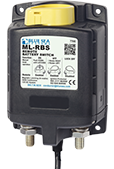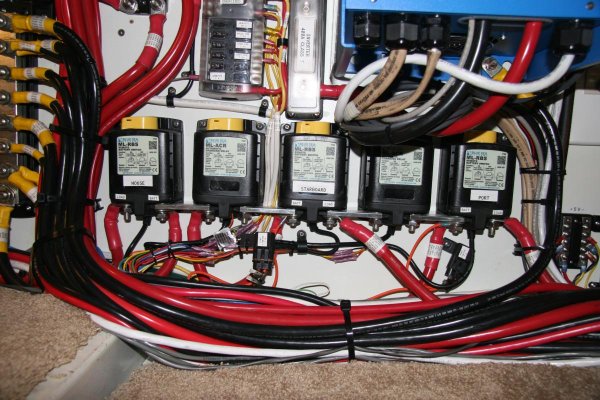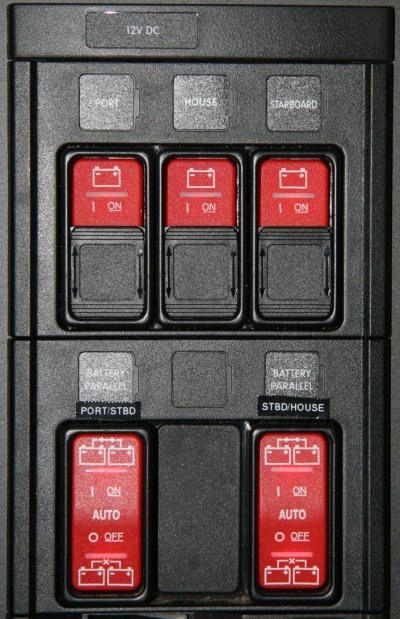Tdot
Member
- Joined
- Sep 7, 2014
- Messages
- 23
- Location
- Canada
- Vessel Name
- To Be Changed
- Vessel Make
- Custom Steel 40'
Hi guys, so I am tearing into my boats crap-ass electrical system, because it just kills batteries, and wont start half the time.
I tossed two new 8d's in the other day, it killed them dead in two hours. Found bad regulator, a shorted isolator and battery switch so misdesigned, i could swear the government did it ....
The batteries, which are right next to the engine, go all the way to the helm, about 9', to the switch, which is a regular Guest a-b-ab, then back to the isolators, 3', then to a master disconnect, 1', then to the starter, 7-9'.... Im taking 80% losses..... The starter is bad, I'm sure from being chronically undervolted, I'm sure I'm going from 3000cca to less than 900cca due to line losses.
Question: I will toss the disconnect and put in charging and paralleling relays, but for a safety disconnect, can I put one down in the engine room?, I want to raise the batts for safety reasons, and all systems will be behind new breakers in engine room..... Can anyone see any faults with this?
I tossed two new 8d's in the other day, it killed them dead in two hours. Found bad regulator, a shorted isolator and battery switch so misdesigned, i could swear the government did it ....
The batteries, which are right next to the engine, go all the way to the helm, about 9', to the switch, which is a regular Guest a-b-ab, then back to the isolators, 3', then to a master disconnect, 1', then to the starter, 7-9'.... Im taking 80% losses..... The starter is bad, I'm sure from being chronically undervolted, I'm sure I'm going from 3000cca to less than 900cca due to line losses.
Question: I will toss the disconnect and put in charging and paralleling relays, but for a safety disconnect, can I put one down in the engine room?, I want to raise the batts for safety reasons, and all systems will be behind new breakers in engine room..... Can anyone see any faults with this?





